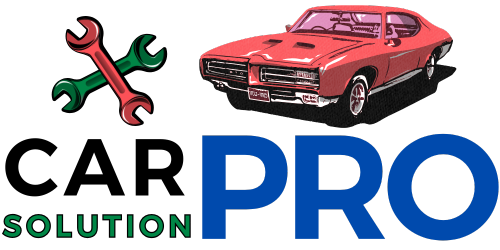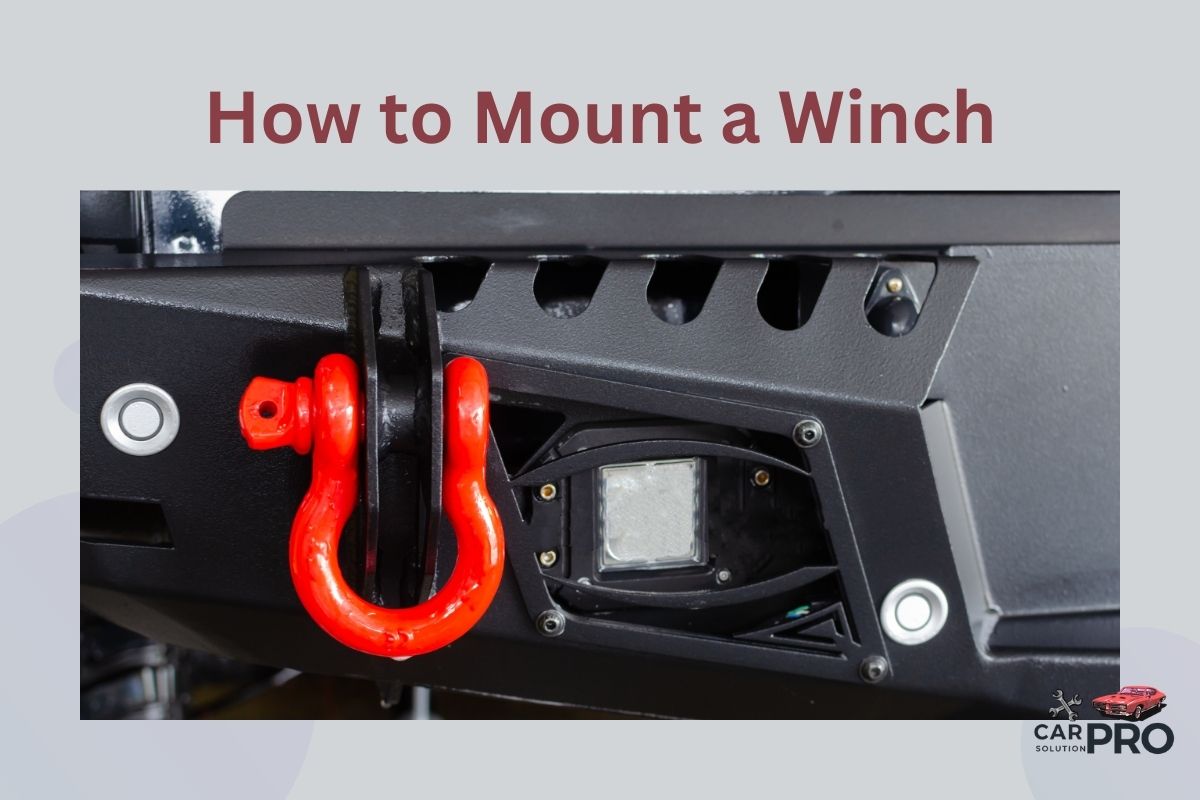Adding a winch to your trailer can be a game-changer for outdoor enthusiasts and DIY lovers. Mounting a winch on your trailer gives you more range and assistance in tricky situations. This helpful addition can make loading and unloading heavy items much easier, saving you time and effort.
Before starting the installation process, it’s important to consider a few key factors. The weight distribution of your trailer is crucial, as improper mounting can affect its balance and towing stability. You’ll also need to choose the right winch for your specific needs and make sure you have all the necessary tools and equipment.
With proper planning and careful execution, you can mount a winch on your trailer without too much hassle. This guide will walk you through the steps, from selecting the right location to making electrical connections and testing your newly installed winch.
Key Takeaways
- Choose the right winch and mounting location for your trailer’s weight distribution
- Install a sturdy winch mount using the correct hardware and tools
- Test the winch thoroughly and perform regular maintenance for safe operation
Understanding Winch Mounting
Winch mounting involves choosing the right type of winch and securing it properly to your vehicle or trailer. The process requires careful planning and attention to detail for safe and effective use.
Types of Winches
Electric winches are popular for their ease of use. They run on the vehicle’s battery and are great for off-road vehicles. Hydraulic winches use the vehicle’s power steering pump. They’re strong but need more setup. Manual hand winches are simple and don’t need power. They work well for small jobs.
Each type has pros and cons. Electric winches are easy to install but may drain the battery. Hydraulic winches are powerful but complex. Manual winches are reliable but take more effort to use.
Winch Mounting Basics
Proper winch mounting is key for safety and function. Start by picking a strong mounting spot. The front bumper or a special winch plate works well. Make sure the area can handle the winch’s weight and pull force.
Use the right bolts and nuts. They should be strong enough for the winch’s power. Check the winch plate fits your vehicle. Mark where you’ll drill holes for mounting.
Always follow the maker’s guide for mounting. This helps avoid mistakes. Double-check all connections before use. Test the winch after mounting to ensure it works right.
Preparing for Installation
Getting ready to mount a winch requires careful planning and preparation. Having the right tools and taking proper safety precautions are key steps before starting the installation process.
Tools and Materials
To install a winch properly, you’ll need specific tools and materials. Here’s a list of essential items:
- Socket set and wrenches
- Drill with metal bits
- Measuring tape
- Marker or pencil
- Wire cutters and strippers
- Electrical tape
- Winch mounting kit
- Bolts, nuts, and washers
Make sure to have a winch-specific mounting plate for your vehicle model. This plate helps distribute the load evenly and keeps the winch secure.
Double-check that your winch is compatible with your vehicle’s electrical system. You may need additional wiring or a battery upgrade for proper functioning.
Safety Considerations
Safety should be your top priority when mounting a winch. Here are some important precautions:
-
Wear protective gear:
- Safety glasses
- Work gloves
- Steel-toed boots
-
Disconnect the vehicle’s battery before starting any electrical work.
-
Use jack stands when working under the vehicle. Never rely solely on a jack for support.
-
Align the winch carefully with pre-drilled holes to avoid damaging the mounting plate or vehicle frame.
-
Follow the manufacturer’s torque specifications when tightening bolts. Over-tightening can damage components.
-
Keep your work area clean and well-lit to avoid accidents.
Remember to read the winch manual thoroughly before installation. It contains valuable safety information and specific instructions for your model.
Mounting the Winch
Proper winch mounting ensures safety and functionality. The process involves examining the surface, positioning the winch, and attaching it securely.
Assessing the Mounting Surface
Before mounting, check the trailer’s structure. Look for a strong metal frame or reinforced wooden deck. Some trailers may need a mounting plate for extra support.
For metal frames, inspect for rust or damage. Clean the area thoroughly. On wooden decks, check for rot or weakness. Replace any damaged boards.
Measure the space where you plan to mount the winch. Make sure it fits without blocking other trailer features. Consider the winch’s weight and the pulling forces it will handle.
Aligning the Winch
Position the winch on the chosen spot. Mark the mounting holes on the surface. Use a level to ensure the winch sits straight.
For gooseneck trailers, find the center point for balance. This helps distribute the load evenly.
Check that the fairlead aligns with the winch drum. This allows the cable to spool correctly. Adjust the position if needed before drilling any holes.
Securing the Winch
Drill holes where you marked them. Use the right size drill bit for your mounting bolts. Clean away any metal shavings or wood dust.
Place the winch over the holes. Insert bolts through the winch base and mounting surface. Add washers for better load distribution.
Attach nuts to the bolts from underneath. Tighten them evenly using a wrench. Don’t overtighten, as this could damage the mounting surface.
Test the winch’s stability by pushing it gently. If it moves, recheck all connections. Once secure, attach the winch cable to the drum following the manufacturer’s instructions.
Electrical Connections
Proper wiring is key for safe winch operation. The right connections ensure reliable power delivery and control.
Wiring the Winch
Wiring a winch starts with the main power cables. Connect the thick red cable to the winch’s positive terminal. Attach the black cable to the negative terminal.
Route these cables to the solenoid box. This box controls power flow to the winch motor. Mount it in a dry spot near the winch.
Next, connect the thin control wires. These run from the solenoid to the winch’s control switch. Follow the color coding in your winch manual for correct hookup.
Use high-quality connectors and weatherproof all connections. This prevents corrosion and ensures long-term reliability.
Connecting to the Power Source
The winch needs a strong power source. Most often, this is the vehicle’s battery. Run the main power cables from the solenoid to the battery.
Use cable of the right gauge for your winch’s amperage draw. Too thin, and it may overheat.
Connect the red cable to the positive battery terminal. Attach the black to the negative or a good ground point on the vehicle frame.
Install a circuit breaker or fuse near the battery. This protects against electrical shorts.
For added safety, add a master cut-off switch. This lets you quickly disconnect power when the winch isn’t in use.
Testing and Maintenance
After mounting a winch, proper testing and upkeep are vital. Regular checks and care will keep your winch ready for action when you need it most.
Initial Testing
Start by testing the winch’s basic functions. Engage the clutch and use the remote to spool out some cable. Check that the cable winds evenly on the drum. Test the winch in both directions to ensure smooth operation.
Connect the winch to your vehicle’s electrical system following the manufacturer’s instructions. Make sure all connections are secure. Run the winch under load to verify it can handle the weight it’s rated for.
Check for any unusual noises or vibrations during operation. If you notice any issues, stop and review the installation before proceeding.
Routine Inspection
Set a schedule for regular winch inspections. Check the cable for fraying, kinks, or damage. Replace the cable if you spot any problems.
Examine the fairlead for signs of wear. Look for cracks or bends in the mounting plate. Tighten any loose bolts or connections.
Test the solenoid regularly. Ensure it’s properly grounded and has a good 12V power source. Verify continuity between the correct terminals.
Winch Maintenance Tips
Keep your winch clean and dry. After use in muddy or wet conditions, rinse it with fresh water and let it dry completely.
Lubricate moving parts as recommended by the manufacturer. This typically includes the cable, gears, and drum.
Check and top up the gear oil if needed. Most winches use sealed gearboxes, but some may require periodic oil changes.
Store the winch with the cable fully wound and under slight tension. This prevents moisture from getting trapped inside the drum.
When not in use for long periods, disconnect the power to prevent battery drain. Cover the winch to protect it from the elements.
Frequently Asked Questions
Winch installation varies depending on the vehicle or surface. Key factors include choosing the right mounting location, using proper hardware, and following safety guidelines.
What steps are required to install a winch on the front of a truck?
To install a winch on a truck, start by selecting a compatible winch plate. Attach the plate to the truck’s frame using heavy-duty bolts.
Mount the winch to the plate, ensuring it’s centered and level. Connect the winch’s electrical components to the truck’s battery, following the manufacturer’s wiring instructions.
Can a winch be mounted to a car, and if so, how?
A winch can be mounted to a car with the right equipment. Use a custom-fit winch bumper or a hidden winch mount designed for your car model.
Install the mount securely to the car’s frame. Attach the winch to the mount, making sure it’s properly aligned. Connect the winch to the car’s electrical system, using a heavy-duty battery if needed.
Is it possible to mount a winch to a wall, and which hardware is needed?
Mounting a winch to a wall is possible for garage or workshop use. Choose a wall-mount winch plate rated for the winch’s weight and pulling capacity.
Use heavy-duty bolts or anchors to secure the plate to wall studs or concrete. Attach the winch to the plate using the provided hardware. Ensure proper electrical connections and a stable power source.
What is the recommended method for attaching a winch to a tree without causing damage?
Attaching a winch to a tree is not recommended as it can damage the tree and create unsafe conditions. Instead, use a tree saver strap around the tree’s base.
Connect the winch hook to the strap, distributing the load evenly. Always prioritize tree health and environmental protection when using natural anchors for winching.
How do you properly install a winch on a trailer for secure operation?
To install a winch on a trailer, first choose a sturdy mounting location near the tongue. Use a winch mount plate or fabricate a custom bracket if needed.
Bolt the mount securely to the trailer frame. Attach the winch to the mount, ensuring proper alignment. Connect the winch to the trailer’s electrical system or a dedicated battery.
What are the prerequisites for installing a winch by oneself?
Before installing a winch, gather the necessary tools, including wrenches, sockets, and a drill. Read the winch manual thoroughly to understand specific requirements.
Ensure you have the correct mounting hardware and electrical components. Basic mechanical skills and knowledge of vehicle electrical systems are helpful. If unsure, consult a professional to ensure safe installation.


